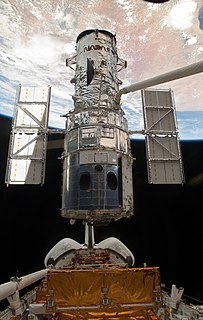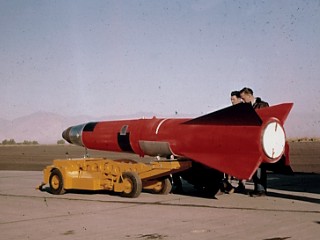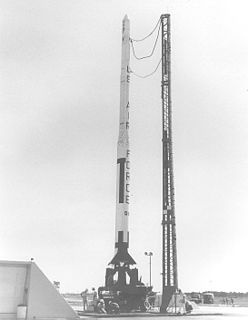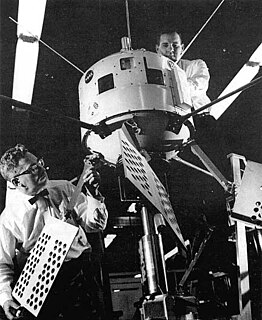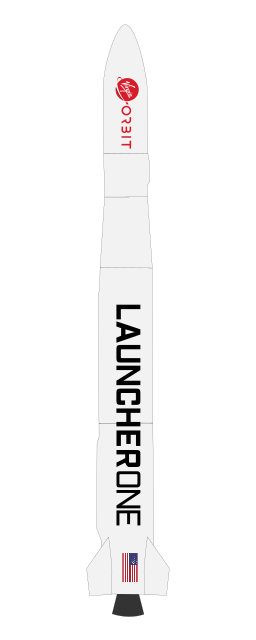| Function | Sounding rocket |
|---|---|
| Manufacturer | Vought |
| Country of origin | United States |
| Size | |
| Height | 22 metres (72 ft) |
| Diameter | 1.01 metres (3 ft 4 in) |
| Mass | 17,000 kilograms (37,000 lb) |
| Stages | Five |
| Associated rockets | |
| Family | Scout |
| Launch history | |
| Status | Retired |
| Launch sites | Wallops LA-3 |
| Total launches | 1 |
| Successes | 1 |
| Failures | 0 |
| Launch date | 1962-03-01 |
| First stage – Algol 1C | |
| Engines | 1 solid |
| Thrust | 471 kilonewtons (106,000 lbf) |
| Specific impulse | 236 sec |
| Burn time | 40 seconds |
| Fuel | Solid |
| Second stage – Castor 1A | |
| Engines | 1 solid |
| Thrust | 286 kilonewtons (64,000 lbf) |
| Specific impulse | 247 sec |
| Burn time | 27 seconds |
| Fuel | Solid |
| Third stage – Antares 1A | |
| Engines | 1 X-254 |
| Thrust | 60 kilonewtons (13,000 lbf) |
| Specific impulse | 256 sec |
| Burn time | 39 seconds |
| Fuel | Solid |
| Fourth stage – Altair 1A | |
| Engines | 1 X-248A |
| Thrust | 14 kilonewtons (3,100 lbf) |
| Specific impulse | 255 sec |
| Burn time | 40 seconds |
| Fuel | Solid |
| Fifth stage – NOTS-17 | |
| Engines | 1 solid |
| Fuel | Solid |
Scout X-1A was an American sounding rocket which was flown in 1962. It was a five-stage derivative of the earlier Scout X-1, with an uprated first stage, and a NOTS-17 upper stage.
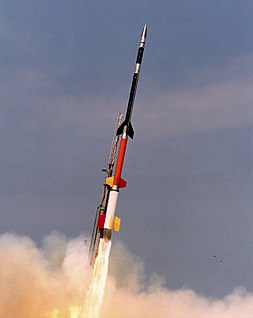
A sounding rocket, sometimes called a research rocket, is an instrument-carrying rocket designed to take measurements and perform scientific experiments during its sub-orbital flight. The rockets are used to carry instruments from 30 to 90 miles above the surface of the Earth, the altitude generally between weather balloons and satellites; the maximum altitude for balloons is about 25 mi (40 km) and the minimum for satellites is approximately 75 mi (121 km). Certain sounding rockets have an apogee between 620 and 930 miles, such as the Black Brant X and XII, which is the maximum apogee of their class. Sounding rockets often use military surplus rocket motors. NASA routinely flies the Terrier Mk 70 boosted Improved Orion, lifting 600–1,000-pound (270–450 kg) payloads into the exoatmospheric region between 60 and 125 miles.

Scout X-1 was an American expendable launch system and sounding rocket which was flown seven times between August 1960 and October 1961. Four orbital and three suborbital launches were made, with four of the launches resulting in failures.
The Scout X-1A used an Algol 1C first stage, instead of the earlier Algol 1B used on the Scout X-1. The second, third and fourth stages were the same as those used on the Scout X-1; a Castor 1A, Antares 1A and Altair 1A respectively. The fifth stage was the NOTS-17 solid rocket motor, which had been developed by the Naval Ordnance Test Station.
The Scout X-1A was launched on its only flight at 05:07 GMT on 1 March 1962. It flew from Launch Area 3 of the Wallops Flight Facility. The flight carried an atmospheric re-entry experiment to an apogee of 214 kilometres (133 mi), and was successful. Following this, the Scout X-1A was replaced by the Scout X-2.

Launch Area 3 (LA-3) at the Wallops Flight Facility is a launch complex which was used, mostly by Scout rockets, between 1960 and 1985. Forty-one Scout launches occurred from the complex, making both orbital and suborbital. In addition, four Nike sounding rockets were launched from the complex in 1970.
Scout X-2 was an American expendable launch system and sounding rocket which was flown twice in 1962. It was a four-stage rocket, based on the earlier Scout X-1, uprated first and third stages. It was a member of the Scout family of rockets.

